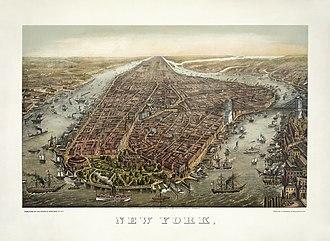Editorial Insight: Preventing the Recurrence of Historical Conflicts in NYC and the Middle East
Drawing Parallels: Social and Political Struggles in New York City and the Middle East
Both New York City and various Middle Eastern regions are currently navigating complex social and political challenges that threaten community stability and peace. These challenges echo historical patterns where unresolved grievances and systemic issues have repeatedly ignited unrest. Understanding these parallels is essential for leaders and citizens to break the cycle of conflict and foster sustainable harmony.
Examining these regions reveals several shared dynamics:
- Widening economic disparities: Significant income and opportunity gaps have historically fueled discontent in NYC boroughs and Middle Eastern societies alike.
- Demographic shifts through migration: Large-scale population movements have reshaped cultural landscapes, sometimes intensifying social friction.
- Identity-based tensions: Ethnic, religious, and cultural divisions have influenced political power struggles and community relations.
- Influence of external actors: Foreign involvement has often exacerbated conflicts or complicated peace efforts.
| Historical Challenge | New York City Context | Middle East Context |
|---|---|---|
| Economic Crisis | 1970s fiscal emergency | Economic downturn post-oil price fluctuations |
| Migration Waves | 1960s Puerto Rican migration | Syrian refugee influx since 2011 |
| Identity Conflicts | Civil Rights era confrontations | Sectarian and ethnic rivalries |
| Foreign Intervention | Cold War espionage activities | Proxy conflicts involving global powers |
Extracting Vital Lessons from Historical Unrest and Urban Challenges
History offers invaluable insights into the root causes of social upheaval. From the Harlem riots of the 1960s to the Arab Spring uprisings, recurring themes such as economic marginalization, political exclusion, and social neglect emerge. These events highlight the necessity of inclusive leadership and active community participation to prevent escalation and foster resilience.
Key takeaways for decision-makers and urban strategists include:
- Proactive conflict prevention: Identifying and addressing tensions early to avoid violent outbreaks.
- Empowering local actors: Supporting grassroots organizations that can mediate and stabilize communities.
- Open and honest communication: Building trust through transparency to counteract misinformation.
- Fair allocation of resources: Ensuring marginalized populations receive equitable support to reduce systemic neglect.
| Event | Underlying Issue | Lesson Learned |
|---|---|---|
| 1977 NYC Blackout Riots | Economic Inequality | Community-focused policing and dialogue |
| Arab Spring (2010-2012) | Authoritarian Governance | Need for transparent and accountable leadership |
| 2011 London Riots | Social Exclusion | Provision of equitable public services |
Policy Strategies to Avert Recurrence of Conflict
Effective governance requires a comprehensive approach emphasizing risk evaluation and timely intervention. Investing in community-based initiatives that promote dialogue and trust-building between diverse groups is critical to defusing tensions before they escalate. Additionally, enhancing intelligence capabilities to monitor potential flashpoints—while safeguarding civil rights—can improve responsiveness without compromising freedoms.
International collaboration and transparency are equally vital. Coordinated diplomatic efforts and economic incentives aimed at peacebuilding can deter destabilizing influences. The following summarizes essential policy actions:
- Advanced early-warning systems: Utilizing data analytics and information sharing to detect emerging conflicts.
- Inclusive political frameworks: Guaranteeing representation for minority and marginalized communities.
- Educational outreach: Promoting awareness of historical conflicts and reconciliation processes.
- Rapid response coalitions: Multilateral teams prepared for swift crisis management.
| Focus Area | Recommended Action | Expected Outcome |
|---|---|---|
| Community Relations | Organize local dialogue forums and mediation | Lowered social tensions |
| Security Infrastructure | Deploy smart surveillance and analytics | Early detection of threats |
| Education | Revise curricula to include conflict history and peacebuilding | More informed and empathetic citizens |
| Diplomatic Engagement | Establish international peacekeeping task forces | Accelerated conflict resolution |
Building Peace Through Grassroots Action and Global Partnerships
Addressing cyclical conflicts demands a dual approach: empowering local communities and fostering international cooperation. Grassroots activism nurtures environments where diverse voices contribute to mutual understanding and reconciliation. This bottom-up strategy is essential for creating durable peace that transcends cultural and generational divides.
Global collaboration complements these efforts by coordinating diplomatic initiatives and humanitarian aid. Cross-border alliances and multilateral peace programs have demonstrated success in reducing tensions and rebuilding trust. Key elements of effective international peacebuilding include:
| Component | Function in Peacebuilding | Illustrative Examples |
|---|---|---|
| Diplomatic Engagement | Maintains open communication channels | UN-led peace negotiations |
| Economic Cooperation | Encourages mutual dependence and stability | Regional trade agreements, joint infrastructure projects |
| Humanitarian Assistance | Meets urgent needs of affected populations | NGO relief operations, refugee support programs |
| Cultural and Educational Exchanges | Promotes intercultural dialogue and empathy | International student exchanges, cultural festivals |
- Empowering local stakeholders: Community-led initiatives serve as early detectors of conflict and hubs for peacebuilding.
- Aligning international efforts: Partnerships flourish when united by shared humanitarian goals.
- Maintaining ongoing dialogue: Sustained communication and adaptability are key to long-term peace.













